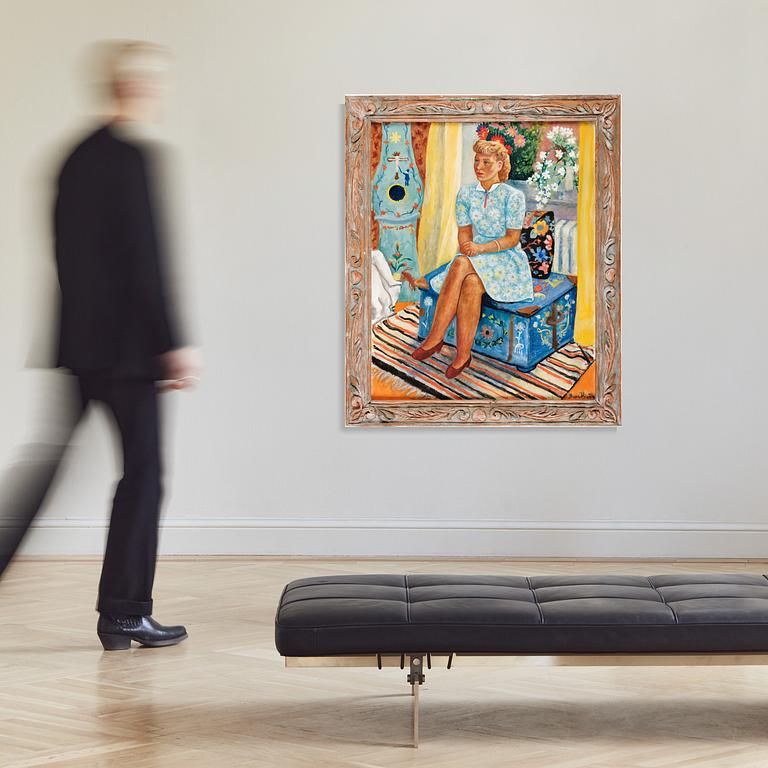Bror Hjorth
"Blommande Eva"
Signed Bror Hjorth. Also signed and dated 1943 verso. Canvas 99 x 81 cm. Frame hand-carved by the artist in wood, dimensions including frame 116 x 98 cm.
Provenance
Insurance Director Gunnar Holmgren.
Private collection.
Exhibitions
Statens Museum for Kunst, Copenhagen, Retrospective exhibition, 1948.
Literature
Bror Hjorth, "Mitt liv i konsten"", 1967, listed under year 1943, p. 201.
More information
In his book "Bror Hjorths Hus –en katalog över huset och samlingarna", 1996, the former museum director of Bror Hjorth's House, Küllike Montgomery, writes the following about Bror Hjorth's paintings:
"During the 1920s Bror Hjorth painted about forty oil paintings, but during the 1930s only eleven. A contributing factor was probably the general opinion among the members of the Färg och Formgruppen that Bror Hjorth was a sculptor and should only exhibit sculpture at the gallery. But after he had hired the model Margit in 1941, he took up painting again and soon began selling the paintings through Svensk-Franska Konstgalleriet and Trägårdhs Konstgalleri in Gothenburg."
When Bror Hjorth exhibited separately at the Svensk-Franska Konstgalleriet in 1943, Nils Palmgren wrote in his review in Aftonbladet, under the headline 'Bror Hjorth - resistance gives way - breakthrough': 'the artist (has) now let go of the naive painterly element and instead consistently strived for stable composition, logical structure, harmonious rhythm and full plasticity' in his paintings".
Another of the models who inspired Bror Hjorth's newfound interest in painting was Eva Nordensson, born Cederblad. Later in life, she became a well-known name in the art world as curator of the National Museum, director of Kulturen in Lund, and then director of Skansen. However, the auction's "Blommande Eva" was painted much earlier. Eva was 18 years old and grew up spending time with the Hjorth family. She appears in several of Bror's paintings from the 30s and 40s. In the large painting "Kafferepet" from 1940, which was sold at Bukowskis in 2006 for a record price (12,500,000 SEK), Eva is seen on the far right in the company of Barbro Hjorth, Bror's niece. In another painting "Vilda indianer vid Långsjön", like "Kafferepet" was painted at Långsjön in Björklinge where Bror Hjorth had his summer studio, Eva is seen climbing out of the water. The painting now hangs in the studio in Bror Hjorth's house.
The overall decorative effect of the composition is completed by the frame, hand-cut by the artist himself. Bror Hjorth's frames deserve to be considered as works of art in their own majesty and Küllike Montgomery has once again written about the frames: "By cutting frames for almost all his paintings, Bror Hjorth also added a sculptural element to the painting. The frames became individual; they were not to be too evenly cut or have too deep a gold luster. The gold leaf was to be applied in moderation and the frame is often cut from rough wood."




















































